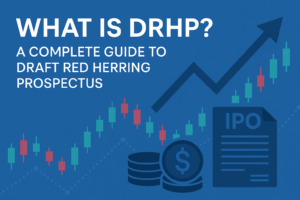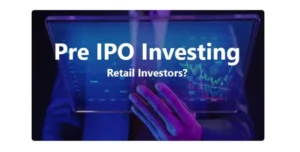Mainboard vs SME IPO: What Retail Investors Need to Know
Introduction: Why IPO Category Matters
Not all IPO are created equal. While many investors know about Mainboard IPOs from large companies, a rising number of SMEs (Small and Medium Enterprises) are also listing on the stock exchange. These are known as SME IPOs.
As a retail investor, understanding the key differences between SME vs Mainboard IPO can help you make informed decisions, reduce risks, and grab early opportunities. This blog breaks down the basics, pros, cons, and what you must know before applying.
🌎 What Is a Mainboard IPO?
A Mainboard IPO is issued by well-established companies that meet strict listing requirements by SEBI (Securities and Exchange Board of India).
Key Features:
- Listed on NSE or BSE Mainboard platform
- Minimum paid-up capital: ₹10 crore
- Typically large issue sizes
- Strict compliance, disclosures, and governance
- Suitable for all investor categories: QIB, HNI, and Retail
Example:
Companies like Zomato, Paytm, and LIC launched Mainboard IPOs.
🏢 What Is an SME IPO?
SME IPOs are designed for small and medium enterprises looking to raise capital from the public.
Key Features:
- Listed on NSE Emerge or BSE SME platform
- Minimum paid-up capital: ₹1 crore to ₹10 crore
- Smaller issue sizes
- Lighter regulatory requirements compared to Mainboard
- Often under-researched and high-risk/high-reward
Example:
SME companies in manufacturing, tech, textiles, or pharma often use this route.
📊 SME vs Mainboard IPO: Key Differences
| Feature | SME IPO | Mainboard IPO |
|---|---|---|
| Listing Platform | NSE Emerge / BSE SME | NSE / BSE Mainboard |
| Company Size | Small to Medium Enterprises | Large, well-established companies |
| Issue Size | Smaller (few crores) | Large-scale (hundreds or thousands of cr) |
| Regulatory Requirements | Simplified | Strict SEBI norms |
| Risk Factor | Higher (low liquidity, price swings) | Lower (more regulated, stable) |
| Research & Analysis | Limited coverage | Widely analyzed |
| Lot Size for Retail | Larger (min investment ₹1-2 lakh) | Smaller (as low as ₹15,000) |
| Promoter Holding Lock-in | Longer (3 years typical) | Shorter or flexible |
🔔 Can Retail Investors Apply in SME IPOs?
Yes, but with a catch. While retail investors can apply, the lot sizes in SME IPOs are larger. This means:
- You may need to invest ₹1–2 lakh or more
- SME IPOs are less liquid post-listing, making exit harder
- Most SME shares are only traded in a special SME segment
It’s crucial to understand the business and fundamentals before applying.
🚀 Pros and Cons of SME IPOs for Retail Investors
Pros:
- Early investment opportunity in growing companies
- Potential for multi-bagger returns
- Lower competition in allotment due to less public attention
Cons:
- High volatility and low liquidity
- Limited information available
- Risk of poor corporate governance
💼 Which One Should You Choose?
Choose Mainboard IPOs if You:
- prefer stable and large businesses
- want lower investment risk
- are a beginner in IPO investing
Consider SME IPOs if You:
- can study companies independently
- okay with higher risk for higher return
- can invest larger amounts
A smart investor often diversifies between both based on the opportunity and market timing.
🔮 Final Thoughts: Know Before You Apply
Both SME and Mainboard IPOs offer unique advantages. The key lies in understanding your own risk appetite, capital availability, and research ability.
Don’t just chase IPO hype. Instead, make data-driven decisions. The more you understand the difference between SME vs Mainboard IPO, the better your chances of success.
Share this content:






Post Comment